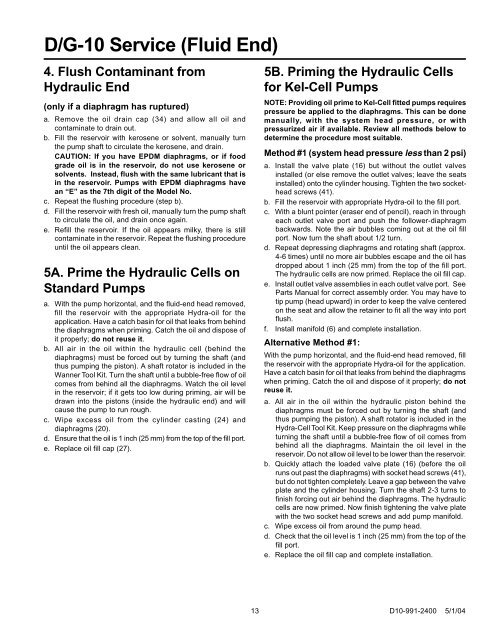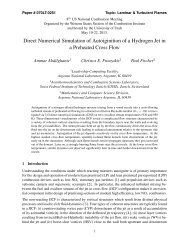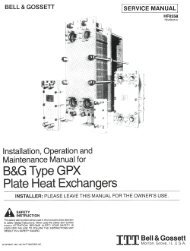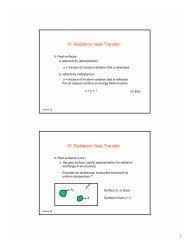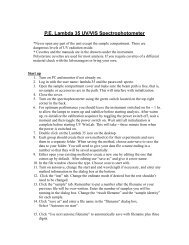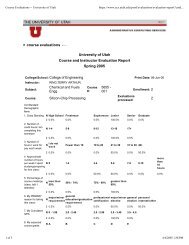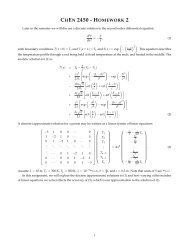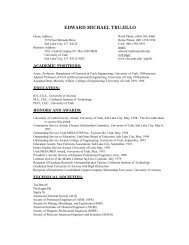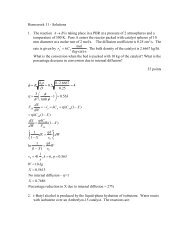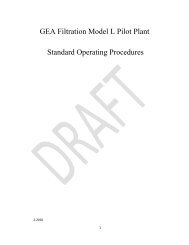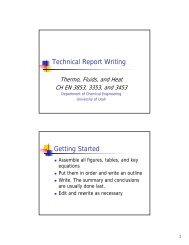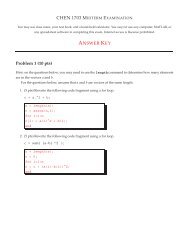HYDRA CELL Manuale Uso e Manutenzione ... - Asco Pompe Srl
HYDRA CELL Manuale Uso e Manutenzione ... - Asco Pompe Srl
HYDRA CELL Manuale Uso e Manutenzione ... - Asco Pompe Srl
- No tags were found...
You also want an ePaper? Increase the reach of your titles
YUMPU automatically turns print PDFs into web optimized ePapers that Google loves.
D/G-10 Service (Fluid End)4. Flush Contaminant fromHydraulic End(only if a diaphragm has ruptured)a. Remove the oil drain cap (34) and allow all oil andcontaminate to drain out.b. Fill the reservoir with kerosene or solvent, manually turnthe pump shaft to circulate the kerosene, and drain.CAUTION: If you have EPDM diaphragms, or if foodgrade oil is in the reservoir, do not use kerosene orsolvents. Instead, flush with the same lubricant that isin the reservoir. Pumps with EPDM diaphragms havean “E” as the 7th digit of the Model No.c. Repeat the flushing procedure (step b).d. Fill the reservoir with fresh oil, manually turn the pump shaftto circulate the oil, and drain once again.e. Refill the reservoir. If the oil appears milky, there is stillcontaminate in the reservoir. Repeat the flushing procedureuntil the oil appears clean.5A. Prime the Hydraulic Cells onStandard Pumpsa. With the pump horizontal, and the fluid-end head removed,fill the reservoir with the appropriate Hydra-oil for theapplication. Have a catch basin for oil that leaks from behindthe diaphragms when priming. Catch the oil and dispose ofit properly; do not reuse it.b. All air in the oil within the hydraulic cell (behind thediaphragms) must be forced out by turning the shaft (andthus pumping the piston). A shaft rotator is included in theWanner Tool Kit. Turn the shaft until a bubble-free flow of oilcomes from behind all the diaphragms. Watch the oil levelin the reservoir; if it gets too low during priming, air will bedrawn into the pistons (inside the hydraulic end) and willcause the pump to run rough.c. Wipe excess oil from the cylinder casting (24) anddiaphragms (20).d. Ensure that the oil is 1 inch (25 mm) from the top of the fill port.e. Replace oil fill cap (27).5B. Priming the Hydraulic Cellsfor Kel-Cell PumpsNOTE: Providing oil prime to Kel-Cell fitted pumps requirespressure be applied to the diaphragms. This can be donemanually, with the system head pressure, or withpressurized air if available. Review all methods below todetermine the procedure most suitable.Method #1 (system head pressure less than 2 psi)a. Install the valve plate (16) but without the outlet valvesinstalled (or else remove the outlet valves; leave the seatsinstalled) onto the cylinder housing. Tighten the two socketheadscrews (41).b. Fill the reservoir with appropriate Hydra-oil to the fill port.c. With a blunt pointer (eraser end of pencil), reach in througheach outlet valve port and push the follower-diaphragmbackwards. Note the air bubbles coming out at the oil fillport. Now turn the shaft about 1/2 turn.d. Repeat depressing diaphragms and rotating shaft (approx.4-6 times) until no more air bubbles escape and the oil hasdropped about 1 inch (25 mm) from the top of the fill port.The hydraulic cells are now primed. Replace the oil fill cap.e. Install outlet valve assemblies in each outlet valve port. SeeParts Manual for correct assembly order. You may have totip pump (head upward) in order to keep the valve centeredon the seat and allow the retainer to fit all the way into portflush.f. Install manifold (6) and complete installation.Alternative Method #1:With the pump horizontal, and the fluid-end head removed, fillthe reservoir with the appropriate Hydra-oil for the application.Have a catch basin for oil that leaks from behind the diaphragmswhen priming. Catch the oil and dispose of it properly; do notreuse it.a. All air in the oil within the hydraulic piston behind thediaphragms must be forced out by turning the shaft (andthus pumping the piston). A shaft rotator is included in theHydra-Cell Tool Kit. Keep pressure on the diaphragms whileturning the shaft until a bubble-free flow of oil comes frombehind all the diaphragms. Maintain the oil level in thereservoir. Do not allow oil level to be lower than the reservoir.b. Quickly attach the loaded valve plate (16) (before the oilruns out past the diaphragms) with socket head screws (41),but do not tighten completely. Leave a gap between the valveplate and the cylinder housing. Turn the shaft 2-3 turns tofinish forcing out air behind the diaphragms. The hydrauliccells are now primed. Now finish tightening the valve platewith the two socket head screws and add pump manifold.c. Wipe excess oil from around the pump head.d. Check that the oil level is 1 inch (25 mm) from the top of thefill port.e. Replace the oil fill cap and complete installation.13 D10-991-2400 5/1/04


